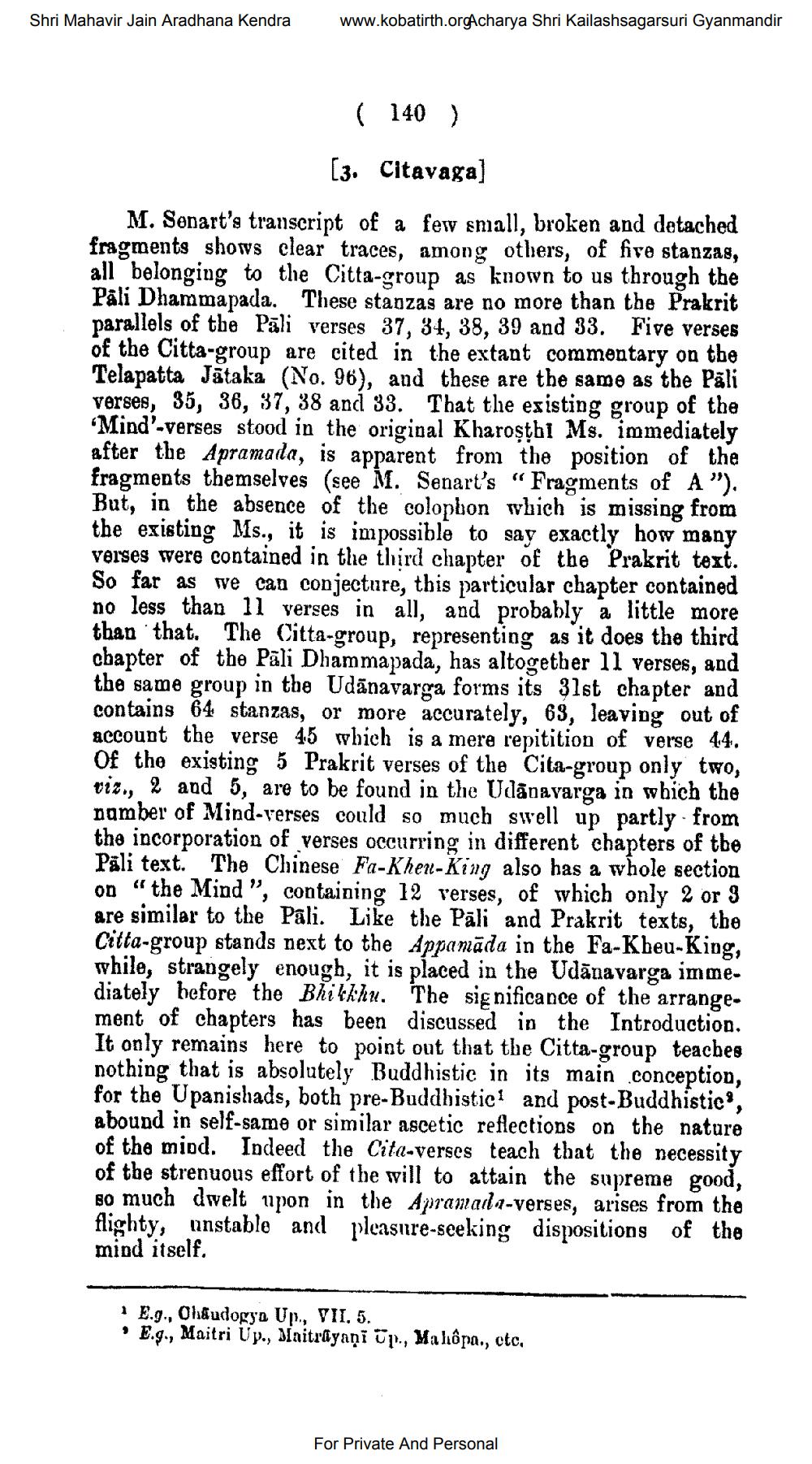________________
Shri Mahavir Jain Aradhana Kendra
www.kobatirth.orgAcharya Shri Kailashsagarsuri Gyanmandir
[3. Citavaga] M. Senart's transcript of a few small, broken and detached fragments shows clear traces, among others, of five stanzas, all belonging to the Citta-group as known to us through the Pāli Dhammapada. These stanzas are no more than the Prakrit parallels of the Pāli verses 37, 34, 38, 39 and 33. Five verses of the Citta-group are cited in the extant commentary on the Telapatta Jataka (No. 96), and these are the same as the Pāli verses, 35, 36, 37, 38 and 33. That the existing group of the ‘Mind'-verses stood in the original Kharoşthi Ms. immediately after the Apramada, is apparent from the position of the fragments themselves (see M. Senart's “Fragments of A"). But, in the absence of the colophon which is missing from the existing Ms., it is impossible to say exactly how many verses were contained in the third chapter of the Prakrit text. So far as we can conjecture, this particular chapter contained no less than 11 verses in all, and probably a little more than that. The Citta-group, representing as it does the third chapter of the Pāli Dhammapada, has altogether 11 verses, and the same group in the Udānavarga forms its 3lst chapter and contains 64 stanzas, or more accurately, 69, leaving out of account the verse 45 which is a mere repitition of verse 44. Of the existing 5 Prakrit verses of the Cita-group only two, viz., 2 and 5, are to be found in the Udãnavarga in which the number of Mind-verses could so much swell up partly from the incorporation of verses occurring in different chapters of tbe Pāli text. The Chinese Fa-Khen-King also has a whole section on “the Mind”, containing 12 verses, of which only 2 or 3 are similar to the Pali. Like the Pāli and Prakrit texts, the Citta-group stands next to the Appamāda in the Fa-Kbeu-King, while, strangely enough, it is placed in the Udānavarga immediately before the Bħikkhu. The significance of the arrangement of chapters has been discussed in the Introduction. It only remains here to point out that the Citta-group teaches nothing that is absolutely Buddhistic in its main conception, for the Upanishads, both pre-Buddhistic and post-Buddhistic, abound in self-same or similar ascetic reflections on the nature of the miod. Indeed the Cita-verses teach that the necessity of the strenuous effort of the will to attain the supreme good, 80 much dwelt upon in the Apramarla-verses, arises from the flighty, unstable and pleasure-sceking dispositions of the mind itself.
* E.g., Ohaudogyo Up., VII, 5. • E.g., Maitri Uy., Maitrayani ul., Malôpa., etc,
For Private And Personal




